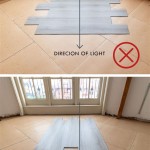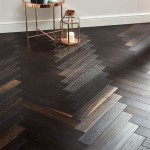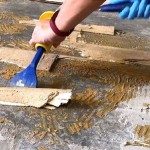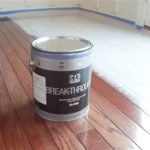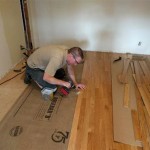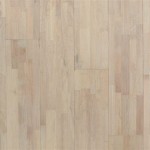How To Remove Tape Residue From Hardwood Floors
Hardwood floors offer a timeless elegance and enduring durability to any home. However, adhesive residue left behind by tape can detract from their beauty and potentially damage the finish. Removing tape residue from hardwood floors requires a careful and methodical approach to avoid scratching, discoloration, or other forms of damage. This article provides a comprehensive guide to safely and effectively removing tape residue from hardwood floors.
The type of adhesive, the type of finish on the hardwood, and the duration the tape was adhered all influence the ease with which the residue can be removed. Understanding these factors helps determine the most appropriate removal method. Attempting aggressive methods on sensitive finishes can cause irreparable harm, whereas gentler methods may prove insufficient for stubborn residues.
Prior to beginning any cleaning process, it is crucial to identify the type of finish on the hardwood floor. Common finishes include polyurethane, varnish, wax, and oil-based finishes. Polyurethane and varnish are durable, protective coatings, while wax and oil-based finishes are more susceptible to damage from solvents and abrasive cleaning. Determining the finish type dictates the selection of appropriate cleaning agents and techniques.
Identifying Your Hardwood Floor Finish
Identifying the type of finish on your hardwood floor can be accomplished through several methods. A simple scratch test in an inconspicuous area can provide clues. Polyurethane finishes are highly resistant to scratching, whereas wax and oil finishes are easily scratched. Applying a small amount of mineral spirits to a hidden area can also help. If the finish becomes sticky or dissolves, it is likely a wax or shellac finish. If the mineral spirits bead up on the surface, it is likely a polyurethane or varnish finish.
Another approach involves examining the floor’s sheen. Polyurethane finishes are available in a range of sheens, from high gloss to matte. Wax and oil finishes typically have a lower sheen and a more natural appearance. Finally, if you have access to records from when the floor was installed or refinished, those documents should specify the type of finish used.
Once the finish has been identified, the next step is to gather the necessary supplies. The selection of supplies depends on the chosen removal method. However, some generally useful items include soft cloths, microfiber cloths, plastic scrapers, warm water, mild dish soap, mineral spirits, rubbing alcohol (isopropyl alcohol), vinegar, baking soda, and a hairdryer.
Effective Residue Removal Methods
Several methods can be employed to remove tape residue from hardwood floors. It is recommended to start with the gentlest approach and gradually increase the intensity as needed. Always test any cleaning solution in an inconspicuous area first to ensure it does not damage the finish. The following methods are presented in order of increasing intensity.
Warm Water and Mild Dish Soap: This is the gentlest method and is often effective for removing fresh or lightly adhered residue. Mix a small amount of mild dish soap with warm water. Dip a soft cloth into the solution and gently rub the affected area. Avoid soaking the floor, as excessive moisture can damage the wood. Wipe the area with a clean, damp cloth to remove any soap residue, and then dry thoroughly.
Baking Soda Paste: Baking soda is a mild abrasive that can help loosen stubborn residue. Mix baking soda with a small amount of water to form a paste. Apply the paste to the residue and let it sit for a few minutes. Gently rub the area with a soft cloth or sponge in a circular motion. Rinse with a clean, damp cloth and dry thoroughly. This method is generally safe for most hardwood finishes but should still be tested in an inconspicuous area first.
Vinegar Solution: Vinegar is a natural solvent that can dissolve some types of adhesive. Mix equal parts white vinegar and warm water. Apply the solution to the residue and let it sit for a few minutes. Gently rub the area with a soft cloth or sponge. Rinse with a clean, damp cloth and dry thoroughly. Avoid using vinegar on waxed floors, as it can strip the wax.
Rubbing Alcohol (Isopropyl Alcohol): Rubbing alcohol is a stronger solvent that can be effective for removing more stubborn residue. Apply a small amount of rubbing alcohol to a soft cloth and gently dab the residue. Avoid pouring rubbing alcohol directly onto the floor. Rub in a circular motion until the residue begins to dissolve. Wipe the area with a clean, damp cloth to remove any alcohol residue, and then dry thoroughly. Use rubbing alcohol sparingly, as it can damage some finishes.
Mineral Spirits: Mineral spirits is a more potent solvent that should be used with caution. Apply a small amount of mineral spirits to a soft cloth and gently dab the residue. Wear gloves and ensure adequate ventilation when using mineral spirits. Rub in a circular motion until the residue begins to dissolve. Wipe the area with a clean, damp cloth to remove any mineral spirits residue, and then dry thoroughly. Mineral spirits can damage certain finishes, so testing in an inconspicuous area is essential.
Hair Dryer: Applying heat can soften the adhesive, making it easier to remove. Set a hairdryer to a low heat setting and direct the heat towards the residue for a few seconds. Be careful not to overheat the area, as excessive heat can damage the finish. Gently scrape the softened residue with a plastic scraper. Wipe the area with a clean, damp cloth and dry thoroughly. This method is best used in conjunction with one of the solvent-based methods.
Plastic Scraper: A plastic scraper can be used to gently lift the residue from the floor. Hold the scraper at a low angle and carefully scrape the residue away. Avoid using metal scrapers, as they can easily scratch the finish. It is advisable to soften the residue with heat or a solvent before scraping.
When using any of these methods, it is crucial to avoid excessive scrubbing or the use of abrasive materials, as these can damage the finish. Patience and a gentle approach are key to successful residue removal.
Preventing Future Tape Residue Problems
Once the tape residue has been successfully removed, taking steps to prevent future occurrences is important. The following measures can help minimize the risk of tape residue on hardwood floors:
Use Low-Tack Tape: Opt for low-tack tape specifically designed for delicate surfaces. This type of tape is less likely to leave behind residue compared to standard adhesive tape.
Limit Tape Duration: Avoid leaving tape on hardwood floors for extended periods. The longer the tape remains adhered, the more likely it is to leave behind residue.
Proper Tape Removal: When removing tape, pull it back on itself at a 45-degree angle. This technique minimizes the amount of adhesive left behind.
Apply a Protective Barrier: Consider applying a protective barrier, such as a rug or mat, to areas where tape is frequently used. This can help prevent direct contact between the tape and the floor's finish.
Regular Cleaning: Regularly clean the hardwood floors to prevent the buildup of dirt and grime, which can exacerbate adhesive residue problems. Use a pH-neutral cleaner specifically designed for hardwood floors.
Consider Alternative Attachment Methods: Explore alternative attachment methods that do not involve adhesive tape, such as using removable hooks or clips.
Test Tape Before Use: Before applying tape to a large area, test it in an inconspicuous spot to ensure it does not damage the finish or leave behind excessive residue.
By implementing these preventative measures, the occurrence of tape residue on hardwood floors can be significantly reduced, preserving the beauty and integrity of the flooring.
In summary, successfully removing tape residue from hardwood floors requires careful assessment, appropriate selection of cleaning agents, and a methodical approach. Identifying the floor finish is paramount to avoid damaging the surface. Commencing with gentler methods and gradually escalating the intensity as needed is a prudent strategy. Prevention, through the use of low-tack tape, limited adhesion duration, and proper removal techniques, significantly reduces the likelihood of future residue issues. While this article encompasses thorough guidance, consulting a professional floor care specialist may be beneficial for particularly stubborn residue or sensitive floor finishes.

The Best Way To Remove Tape Residue From Hardwood Flooring Between Naps On Porch

4 Ways To Remove Adhesive From A Hardwood Floor Wikihow

Best Cleaner Ever To Remove Sticky Tape From Floors Etc Safe Easy

4 Ways To Remove Adhesive From A Hardwood Floor Wikihow

Flooring Tips How To Remove Tape From A Hardwood Floor

Best Cleaner Ever To Remove Sticky Tape From Floors Etc Safe Easy

Easy Way To Remove Tape Residue Goo Gone

How To Remove Tape Residue From My Wood Floor Knowledge Centre

Easy Ways To Get Rid Of Carpet Tape On Wooden Floors Or Stairs Floor Sanding

Flooring How Can I Remove Carpet Adhesive From Hardwood Floors Home Improvement Stack Exchange
See Also
